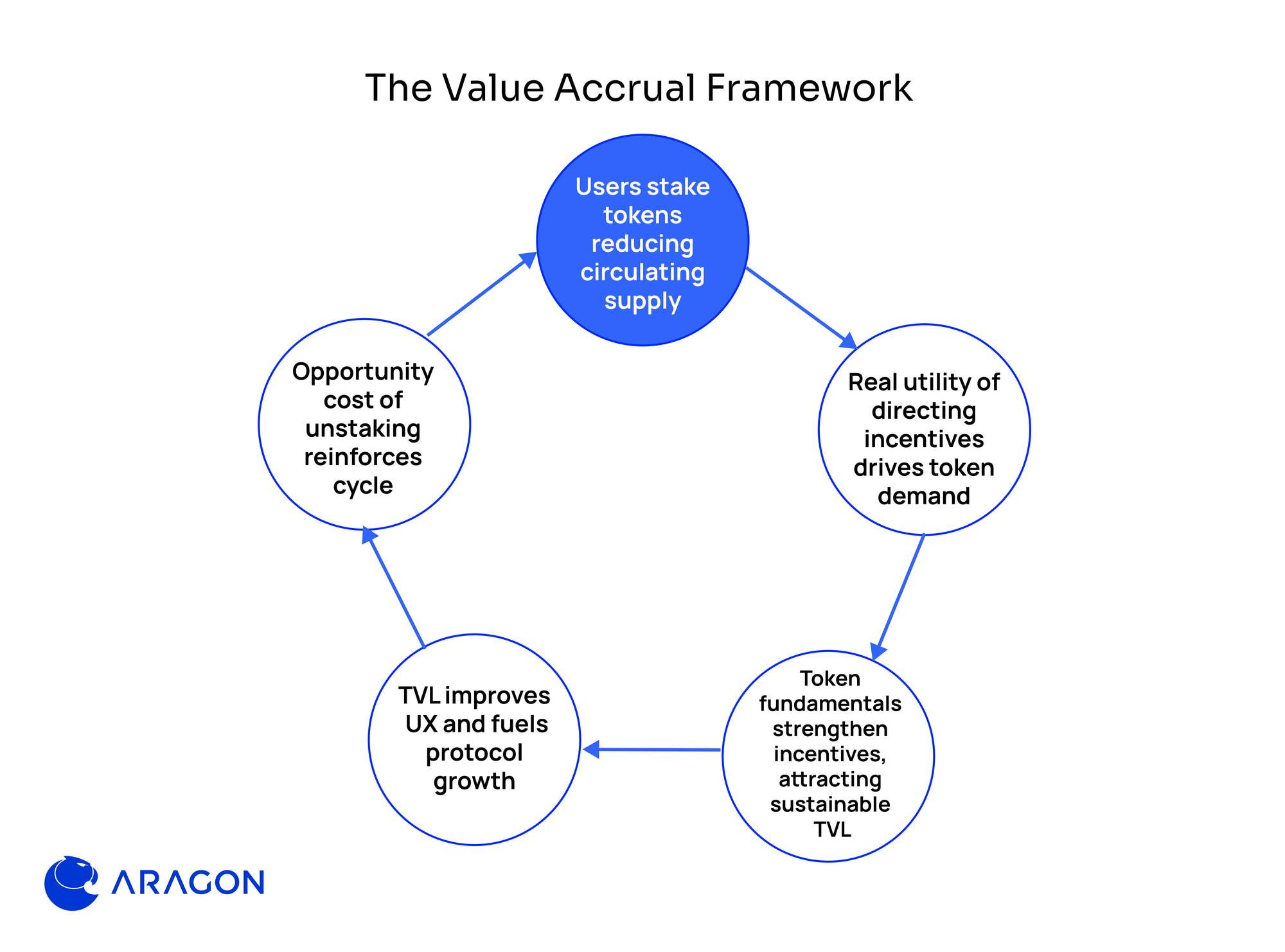Many governance tokens lack real onchain power over protocols and their capital flows. Even when a protocol generates value, it often doesn’t accrue to the token, leaving holders with little reason to stay engaged.
If you’re building a protocol, you’ve probably seen this firsthand—governance becomes political and extractive and community engagement fades.
But it doesn’t need to be this way. By connecting governance, incentives, and value accrual, you can build a system that supports long-term growth and sustainability.
Governance and tokenomics work together—your token’s design affects governance dynamics, while governance decisions determine how resources are allocated, how value is created, and how it eventually accrues to the token.
Protocols that embed economic incentives into governance see stronger ecosystems where token holders actively contribute because they directly benefit from participation—whether through rewards, influence, or revenue sharing.
Liquidity is essential to your protocol. It fuels economic activity, attracts developers, and improves the user experience. But liquidity alone isn’t enough—it must be effectively directed to grow the protocol and its token economy.
Governance should play a role in attracting and retaining liquidity, helping your protocol mature to a stage where it can turn on revenue mechanisms. Once the fee switch is activated, governance can use the same infrastructure to direct revenue flows, turning governance into a growth flywheel.
To help protocols create positive feedback loops between governance and value accrual, we developed governance primitives that reinforce value accrual to the governance token.

How It Works
- Token holders stake the native token to access governance rights, reducing circulating supply and sell pressure.
- Governance controls emissions and incentives, creating tangible token utility and attracting new demand from protocols that want to direct incentives.
- Improved token fundamentals lead to more predictable incentives, attracting sustainable TVL.
- Sustainable TVL enhances user experience and fuels protocol growth, further reinforcing token fundamentals.
- As growth stabilizes, the opportunity cost of unstaking increases, keeping supply out of circulation.
In the best case scenario, well-designed governance tokenomics turn incentive alignment into sustainable growth. This flywheel drives both network growth and value accrual, making governance tokens an integral part of long-term success.
DeFi governance has undergone years of iteration. Drawing from these best practices, we built tokenomics-first governance primitives on Aragon OSx to help protocols design sustainable incentive structures.
Vote Lock (vl)Governance: A modular contract library that enables customizable vote lockers, allowing protocols to fine-tune their governance and economic incentives.
Gauges Governance: A governance plugin that lets token holders allocate voting power to predefined options at set intervals, simplifying decisions and clarifying tradeoffs. It clears a feasible path to optimizing and automating the distribution of emissions, incentives, and protocol revenue.
These primitives can be used separately or in combination to create governance models that reinforce growth and value accrual. Benefits include:
- Rewarding long-term participation and discouraging mercenary behavior;
- Returning decision-making power to those with real economic stake;
- Encouraging deeper voter participation and community engagement;
- Managing token supply dynamics to support protocol health;
- Providing concrete governance utility by giving token holders control over financial flows from day one.
Governance isn’t just about voting—it’s about designing economic systems that sustain participation, align incentives, and drive real value to token holders.
With the right mechanism design, you can move beyond governance as a passive obligation and turn it into a tool for protocol growth.
We’ve been working with projects like Mode and Puffer to build governance models that support liquidity, network growth, and value accrual –reach out to learn more about our services.
